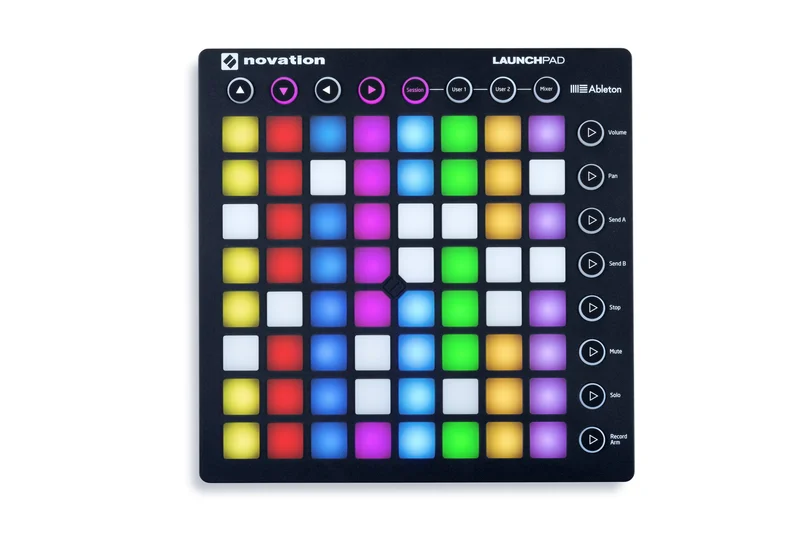Beyond the Glass: Why Your Next Computer Screen Will Read Your Mind
For thirty years, we’ve been talking to our computers through a translator. We click, we type, we drag windows around a digital desktop that’s meant to mimic a real one. It’s a brilliant, but fundamentally flawed, metaphor. We’ve taught generations of humans to think like a filing cabinet, to contort our fluid, chaotic, brilliant thoughts into the rigid boxes and icons of a graphical user interface. But what if we got it backward? What if, instead of us learning the language of the machine, the machine could finally learn to speak ours?
This isn't science fiction anymore. I’m talking about a paradigm shift so profound it will make the jump from the command line to the first Macintosh look like a minor software update. It’s the dawn of the Dynamic Adaptive Interface (DAI), and it’s about to fundamentally change our relationship with technology forever.
Imagine you’re a composer, staring at a screen of digital sheet music. As your eyes scan a complex passage, the notes subtly enlarge. Your brow furrows in concentration, and the software, sensing your cognitive load via a tiny, non-invasive biometric sensor in your chair or watch, automatically brings up annotation tools and playback controls. You think about a specific instrument, and the corresponding track in the mixer highlights itself. There are no clicks, no menus, no interruptions. The digital world is reshaping itself in real-time, anticipating your needs, a silent partner in your creative process. This is the kind of breakthrough that reminds me why I got into this field in the first place.
The Disappearing Interface
So, what is this magic? At its core, a DAI is a user interface that isn't pre-programmed; it’s generated on the fly. It uses a fusion of eye-tracking, biometric feedback, and predictive AI to understand your intent and cognitive state. This is built on something called neuro-adaptive heuristics—in simpler terms, it means the screen changes based on what you need before you consciously decide to act. It’s the digital equivalent of a skilled assistant handing you a tool the moment you realize you need it.
This is a leap as significant as the invention of the printing press. Before Gutenberg, information was chained to the desks of scribes. The GUI unchained the power of computing from the arcane commands of programmers. Now, the DAI will unchain our creativity from the rigid structure of the interface itself. It’s the final step in making the computer disappear, leaving only a seamless extension of our own minds.

Skeptics, of course, are already sounding the alarms. I saw a headline the other day asking, “Is Mind-Reading UI a Privacy Nightmare?” And it’s a fair question. The data required for this—our biometric signals, our patterns of attention—is deeply personal. But to dismiss the entire concept on this fear is like refusing to build roads because cars might crash. The challenge isn’t to stop progress; it’s to build the ethical guardrails, the robust encryption, and the user-controlled privacy frameworks right into the foundation. What if you, and only you, held the key to your own cognitive data? What new levels of self-understanding could that unlock?
A Conversation with Technology
When I first saw an early-stage demo from a small lab in Zurich, I honestly just sat back in my chair, speechless. It was a simple program, a photo editor. But as the user looked at an overexposed part of an image, the brightness and contrast sliders materialized next to their focal point. When they glanced at a blurry section, the sharpening tools faded into view. It wasn't just an interface; it was a conversation.
The potential here is just staggering—it’s not just about making us faster or more efficient, it’s about fundamentally reducing cognitive friction, eliminating the constant low-grade frustration of navigating menus, and creating a true state of flow where the technology melts away and all that’s left is you and your ideas. This is where the real magic happens.
You don’t have to take my word for it. A thread on Reddit’s r/futurology about this very concept was buzzing with a kind of electricity I haven’t seen in years. One user, an architect, wrote: "Imagine a CAD program where the building materials palette changes based on the structural stress points I'm currently analyzing. This would change everything." Another, a teacher, speculated: "What if a learning module for a child with ADHD could adapt its layout in real-time to hold their attention? We could personalize education on a level we can’t even dream of today." This isn’t just hype from a lab; it’s the sound of a thousand different futures snapping into focus all at once. Are we ready for that? How do we even begin to prepare our kids for a world where their digital tools know them better than they know themselves?
The Dawn of Digital Empathy
For decades, we’ve treated our computers like tools—dumb, lifeless objects that we command. We click, and they obey. But we’re standing on the cusp of a new era. We’re not just building better tools anymore. We are building partners. The Dynamic Adaptive Interface isn't the next big thing in software design; it's the first spark of genuine, computational empathy. It’s technology finally learning not just to listen to our commands, but to understand our intent, our focus, and our humanity. And that changes everything.
